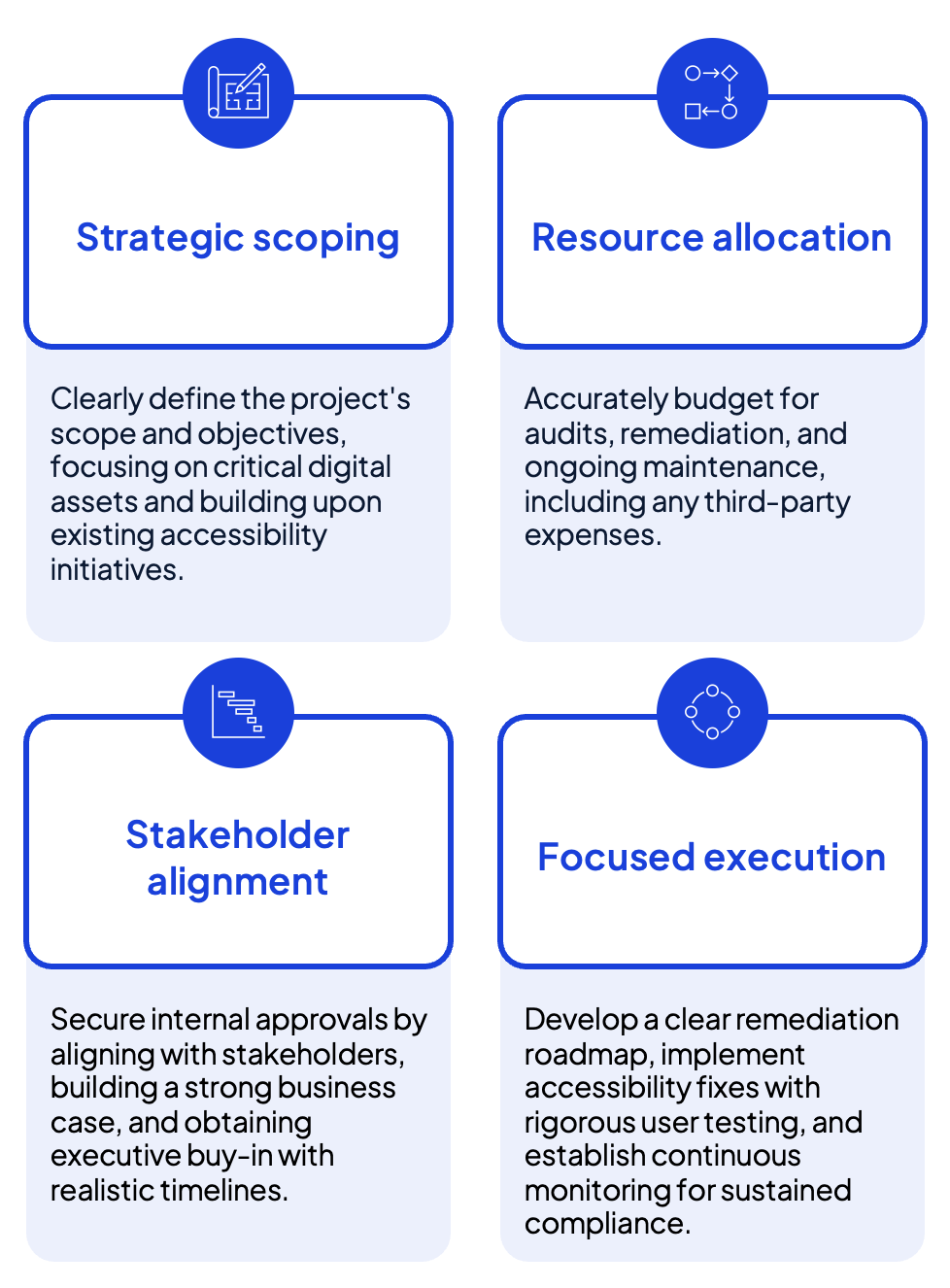The European Accessibility Act (EAA), coming into effect on 28 June 2025, marks a major shift toward digital inclusivity, requiring financial services firms to ensure their digital products and client communications are accessible to people with disabilities. For asset managers operating in the EU or serving EU clients, this isn’t just about compliance—it’s about the fundamental necessity of removing barriers to achieve equitable access and inclusion for all clients. Accessibility is no longer an optional feature; it’s a fundamental expectation in a digital-first world.
Why does the EAA matter?
The EAA is designed to protect the rights of people with disabilities by enforcing accessibility standards across digital services and reports. For asset managers, this means ensuring that websites, client portals, fund centres, and digital reports are fully accessible to everyone regardless of ability. Non-compliance could result in significant consequences, including:
- Financial penalties and legal action
- Barriers to entering and operating in the EU market
- Reputational damage due to lack of accessibility
- Customer dissatisfaction and loss of trust
By proactively addressing these requirements, organisations can demonstrate their commitment to inclusivity while safeguarding their operations.
What does the EAA require?
The EAA mandates accessibility across key digital services, particularly within financial services, e-commerce, banking, and transport. It is based on existing Web Content Accessibility Guidelines (WCAG) 2.1 and applies to all organisations operating within the EU or serving EU consumers.
Note: Certain digital content is exempt from compliance, such as pre-recorded media published before June 28, 2025, and archived content not updated after this date.
Who does it impact?
The EAA directly affects asset managers and financial institutions that provide digital services, including:
- Websites, client portals, and fund centres accommodate users with visual, hearing, and motor disabilities.
- Digital reports and documents are accessible across all consumer-facing touchpoints, including login pages and fund documentation.
- Third-party integrations within financial services platforms adhere to accessibility standards.
Failure to meet these requirements could lead to exclusion from the EU market and potential legal action in the long-term.
Compliance in practice: digital and reporting requirements
To ensure digital accessibility, key areas to focus on include:
- Keyboard navigation – Users must be able to navigate without a mouse, ensuring those with motor impairments can interact fully.
- Screen reader compatibility – Proper use of headings, alt text, and ARIA landmarks which define important sections of a web page, is essential to enable assistive technologies to quickly navigate and understand the page’s structure.
- Accessible forms – Clear labels and error messages are vital for all users, particularly those with cognitive or visual impairments, to understand and complete forms successfully.
- Closed captions and audio descriptions – Are required for video and multimedia content, ensuring access for individuals who are deaf, hard of hearing, or visually impaired.
- Mobile-friendly design – Ensuring zoom support and responsive interfaces, allows content to adapt to different screen sizes and user preferences, critical for those with visual or motor impairments.
Building accessibility into your digital DNA: Immediate action and ongoing reporting
To meet the European Accessibility Act’s requirements and create truly inclusive digital experiences, organisations must act decisively and plan for sustained effort.
- Identify and prioritise materials: Begin by focusing on consumer-facing content, such as fund factsheets, and other essential digital assets that directly impact your clients.
- Conduct a comprehensive accessibility audit: Thoroughly assess your websites, digital portals, reports, and any third-party integrations to identify existing accessibility barriers.
- Train internal teams: Invest in educating your employees on accessibility best practices, regulatory requirements (like the EAA and WCAG 2.2), and the importance of inclusive design.
- Develop and implement a remediation roadmap: Create a plan outlining your path to full compliance, including timelines, responsibilities, key milestones to remediate identified accessibility issues.
- Implement rigorous QA testing: Conduct thorough quality assurance testing to ensure implemented fixes are effective and that content truly meets accessibility standards.
- Address lower-priority issues and implement ongoing monitoring: Establish a system for continuous monitoring to maintain accessibility over time.
- Work Towards Full WCAG 2.2 Compliance: Strive to achieve full conformance with the Web Content Accessibility Guidelines (WCAG) 2.2, the globally recognized standard for web accessibility.
Streamline your accessibility project
While we’ve already covered the essential steps, it’s worth highlighting a few key considerations for a successful project:

Future-proofing your accessibility strategy
Compliance with the EAA is not a one-time exercise; it requires an ongoing commitment to accessibility best practices. Regular audits, continuous staff training, and a structured approach to regulatory changes will help ensure long-term compliance and business success in the EU market.
While achieving full compliance by the 28 June deadline may be challenging, demonstrating a structured remediation plan with clear, prioritised actions will put your organisation in a strong position. Proactive steps toward accessibility not only mitigate risks but also enhance customer trust and regulatory confidence.
At Kurtosys, we specialise in helping asset managers navigate the complexities of regulatory compliance. Our expertise in digital reporting and accessibility solutions ensures your platforms and reports meet the highest standards—empowering your business to stay compliant, competitive, and future-ready.
If you are currently going through the audit process with an accessibility partner specialising in accessibility compliance, speak to us – we can assist you with your remediation work and help you stay ahead of the compliance curve.




